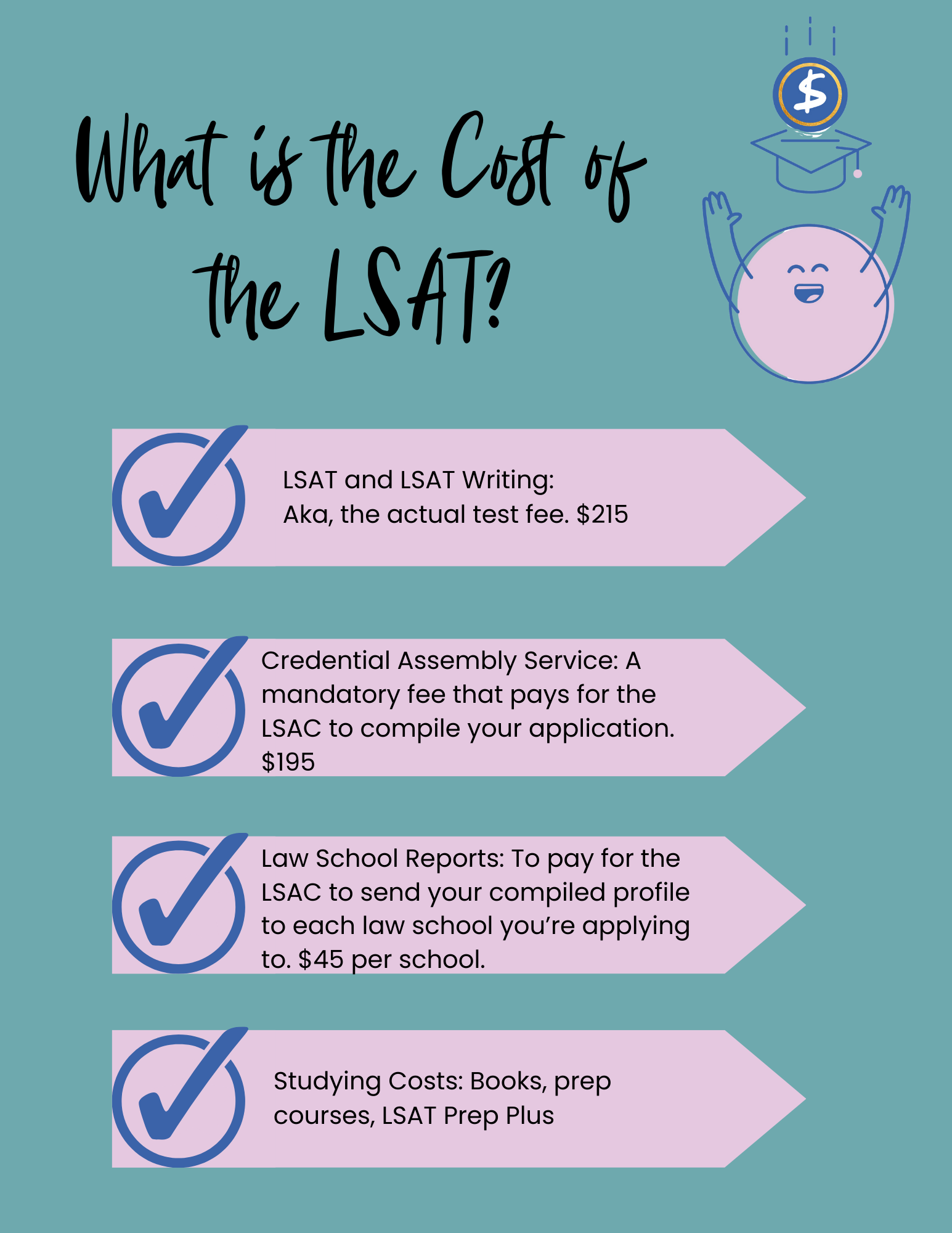The Cost of the LSAT
The Cost of the LSAT -- Taking and Paying for the Test
Once you’ve taken enough LSAT preptests and feel like you’re ready for the real thing, it’s time to register for the LSAT. Unfortunately, that also means paying for the LSAT.
What is the cost of the LSAT? The answer ultimately depends on how often you plan to take the test (many people take the test more than once), as well as your current income level (more on that later).
The basic, mandatory LSAT fees include the following:
LSAT and LSAT Writing: Aka, the actual test fee. $215
Credential Assembly Service: A mandatory fee that pays for the LSAC to compile your application. $195
Law School Reports: To pay for the LSAC to send your compiled profile to each law school you’re applying to. $45 per school.
Those are just the basic costs for the LSAT, though. The true cost, if you’re tracking it, isn’t complete without the cost of studying. Depending on your income level (coming soon, I promise), studying will not be free, especially if you plan on scoring at the top level.
Some common ways to study for the LSAT include:
LSAT Prep Plus: $99 per year.
Khan Academy: Free
A Self Study Book or Course: $35 for a book, $79+ monthly for a course.
At minimum, you should subscribe to LSAT Prep Plus, otherwise known as LSAT Lawhub. Lawhub is a service that allows you to access over 70+ past LSAT exams. If you want to do well on the LSAT, you absolutely must practice with real questions before your official exam. LSAT Lawhub has an extra bonus, too: it’s the only service that lets you practice using the same online interface that is used on the test.
Aside from Preptests, you’ll likely need to learn about the concepts that are tested on the test. There are plenty of students who find success with Khan Academy, though many end up wanting something more, and either buy a self-study book or an online course. You can find my favorite self-study books and courses here.
When you consider the cost of studying for the LSAT in addition to its mountain of testing fees, this test is one expensive proposition. Even the most barebones preparation can cost up to $554, and that’s before applying to any law schools!
Thankfully, though, there are ways for certain students to reduce the cost of the LSAT.
LSAT Fee Waivers
If you qualify under certain income brackets (I told you I’d get to it), the main way to save money on the LSAT is through the LSAT Fee Waiver, an income-based grant that allows certain students to access LSAT services at a lower cost. These services include official LSAT exams, preptests, and even some third party test prep company offerings. The fee waiver is an incredibly helpful tool that can lower the cost of LSAT Prep and Law School Admissions
Depending on the tier that you qualify for, you could receive up the following for free:
Two LSAT exam sittings
One year of LSAT Prep Plus (and access to tons of real LSAT exams)
Credential assembly service (CAS) registration
Six law school reports
One free score preview for first-time test takers.
Basically, you can obtain everything you need to take the LSAT for free. You can also receive discounts from major test prep providers. To find out more about LSAT Fee Waiver eligibility, check out the LSAC’s official page here. To find out more about the test prep providers who accept LSAT Fee Waivers, you can check out the official list here.
If you’re not eligible for the LSAT fee waiver, you can still save on the cost of the LSAT. How? By preparing well for the test, and taking the LSAT only when you’re ready. By being smart (you know, like a lawyer) about the test-taking process, you can save a considerable amount of money. Add it to your eventual law school pizza budget. Your future library friends will thank you.
And don’t forget: you don’t have to just save money. You can earn it. If you study super well, you can earn scholarships of $10,000+ or even $100,000+, depending on the school you apply to. If you find yourself scoring at or above the median scores for your goal schools, it could be worth it to invest in a small group course or one-on-one tutoring and push yourself over the edge. Those few points could be worth far more than your initial investment.
Just keep in mind, though: personal instruction is expensive, no matter how you slice it, and too many people reach out to tutors before they should. Look for instruction only after you’ve made full use of your self-study materials.
If you’d like to learn more about the best path for you, check out my other blog posts, or even schedule a call with me. Even if tutoring isn’t the best fit, I bet we can get you pointed in the right direction.
Keep in mind: self-study resources are typically designed to help the most people possible. That means they’re designed for those who have never seen the LSAT, or those who start with average diagnostic scores (in the 130s-140s). Therefore, the “max score” of self-study resources tends to cap out at 155-160.
If you’re looking for help surpassing these scores, and moving into the top 10%, you will have to push your understanding beyond what mainstream self-study methods have to offer. Many students can push into the 170s via careful self-study. If you think you’d like a guide along the way, take a look at how I can help you.



